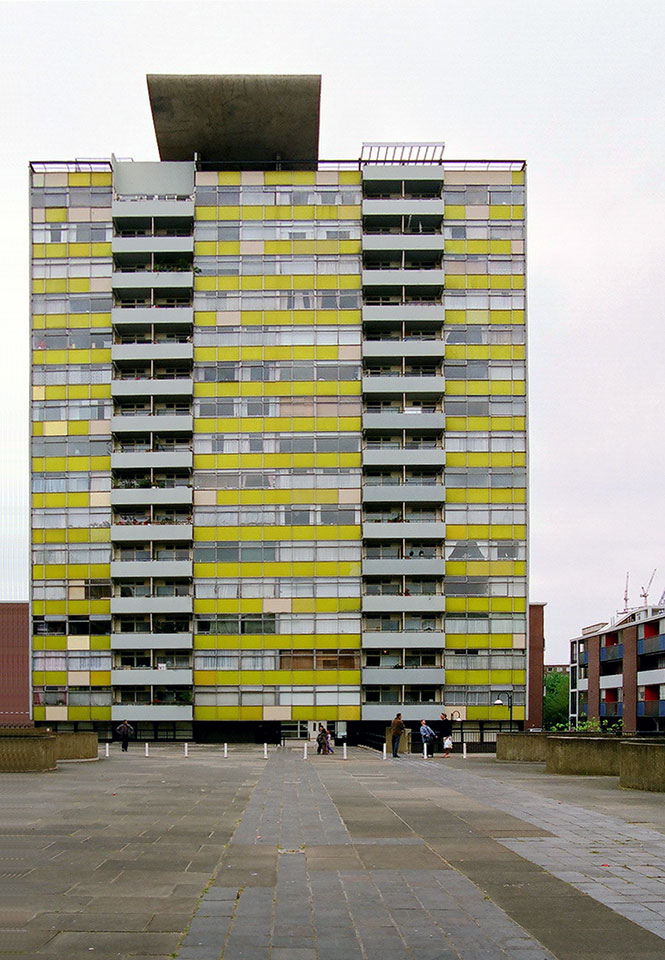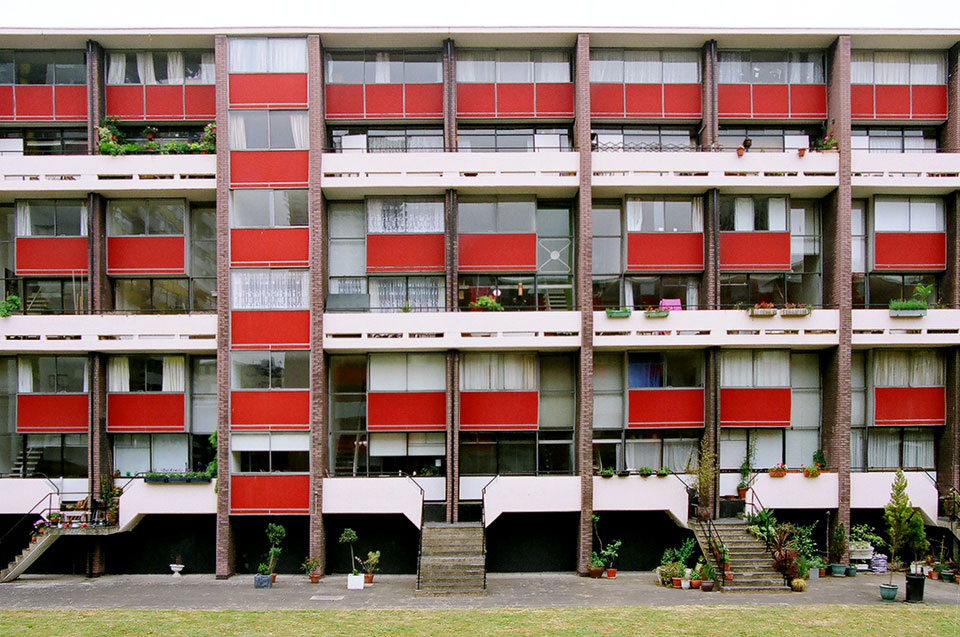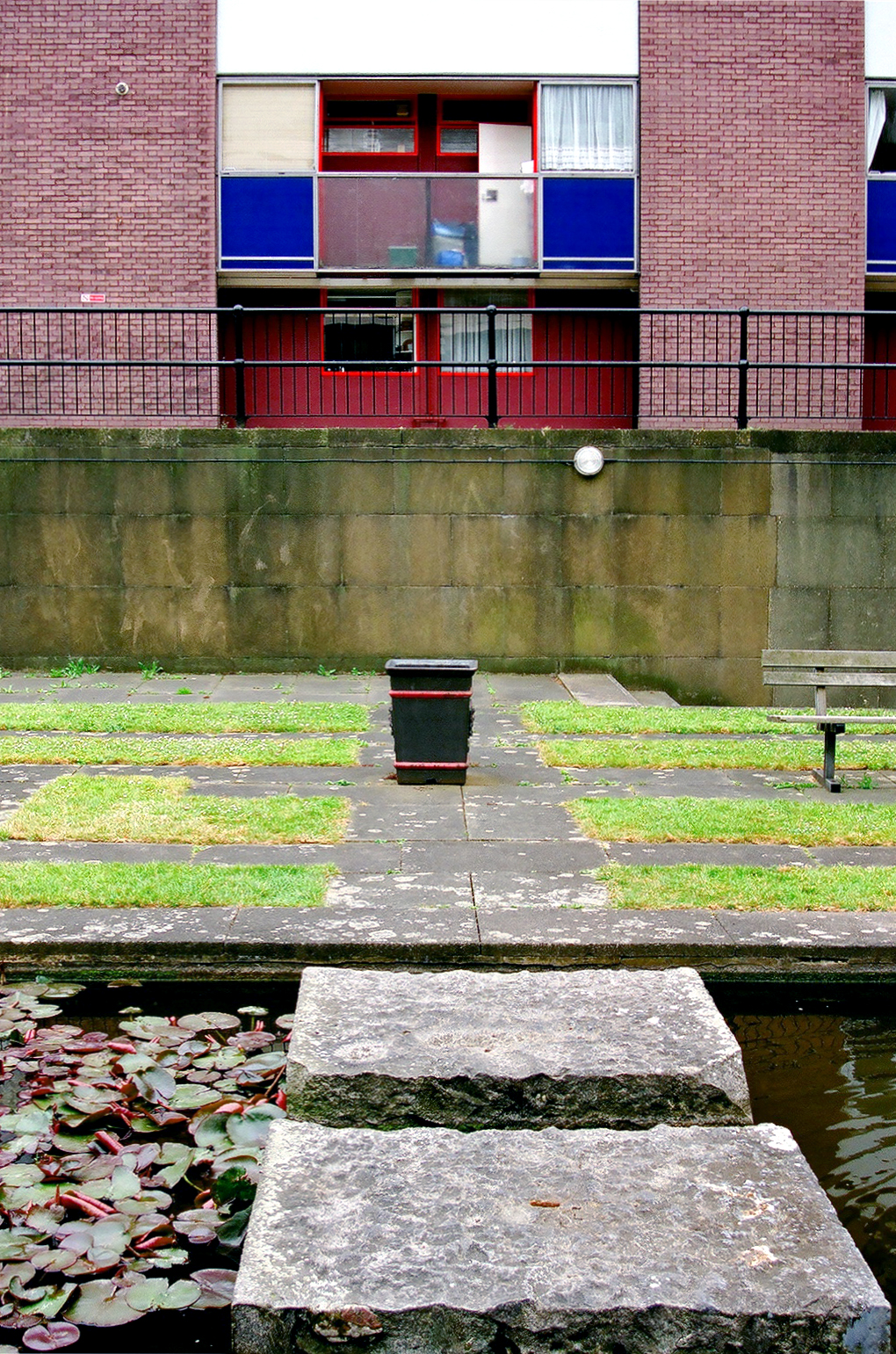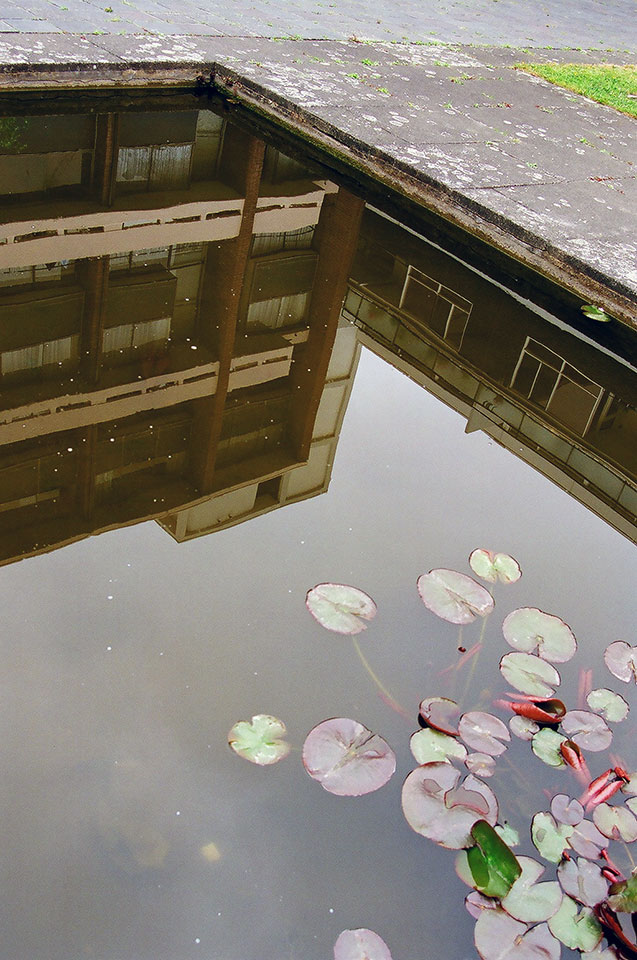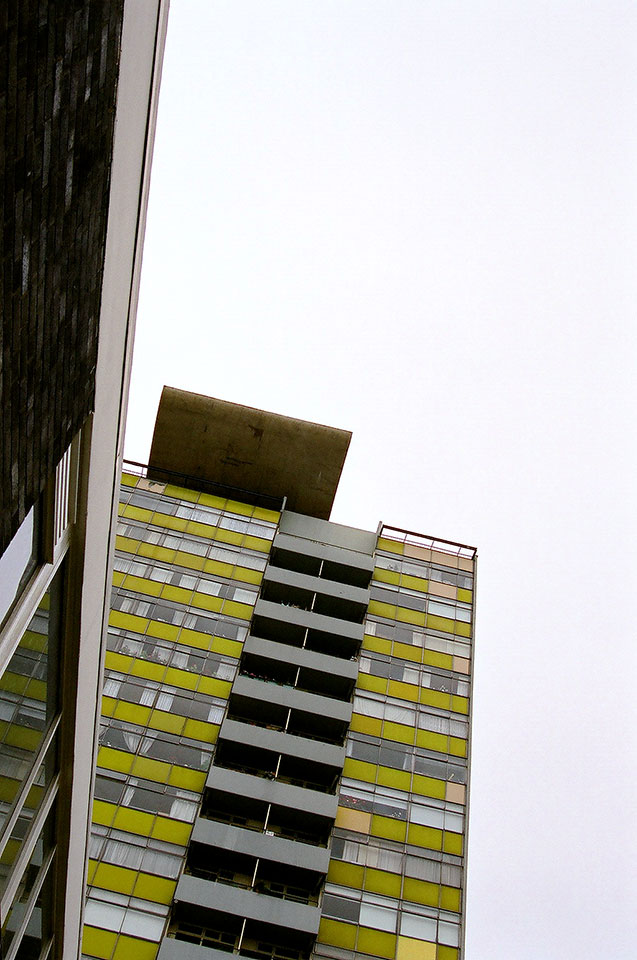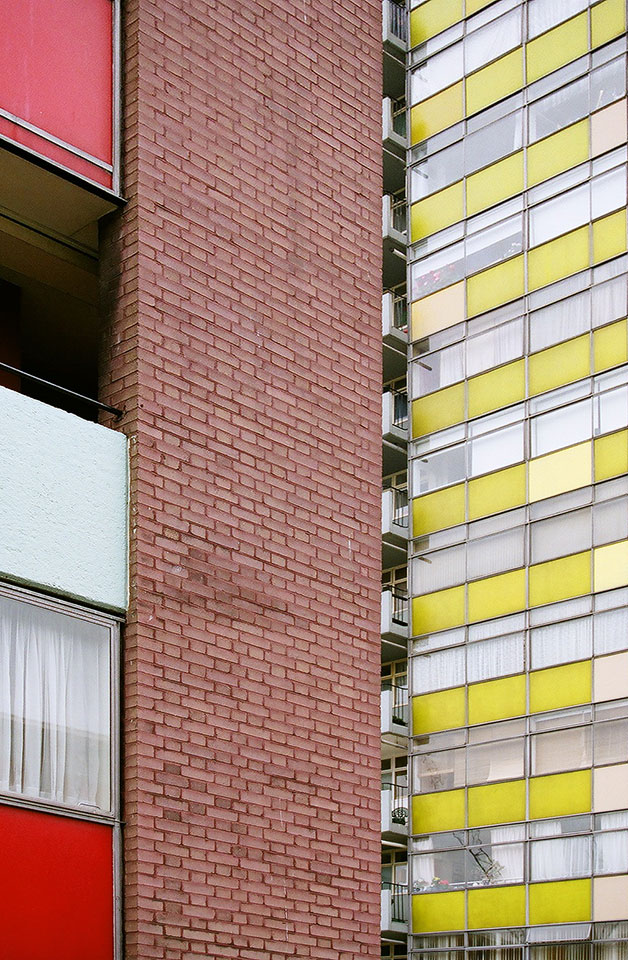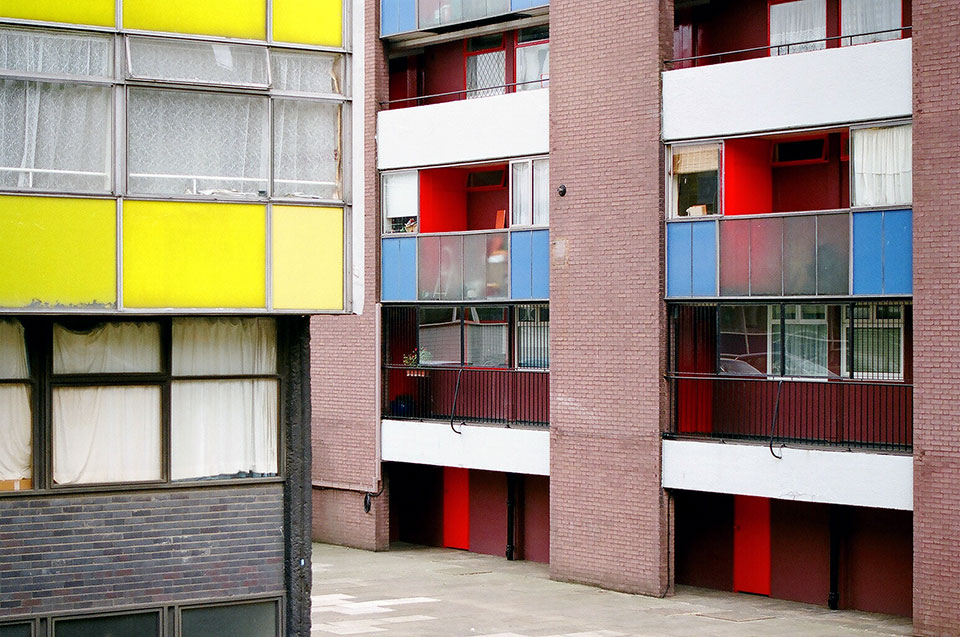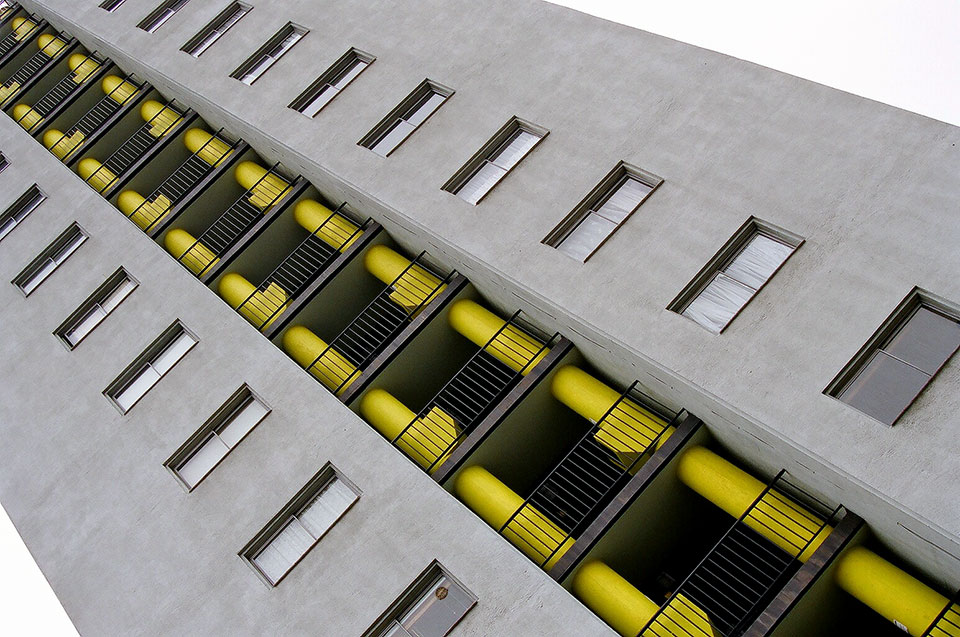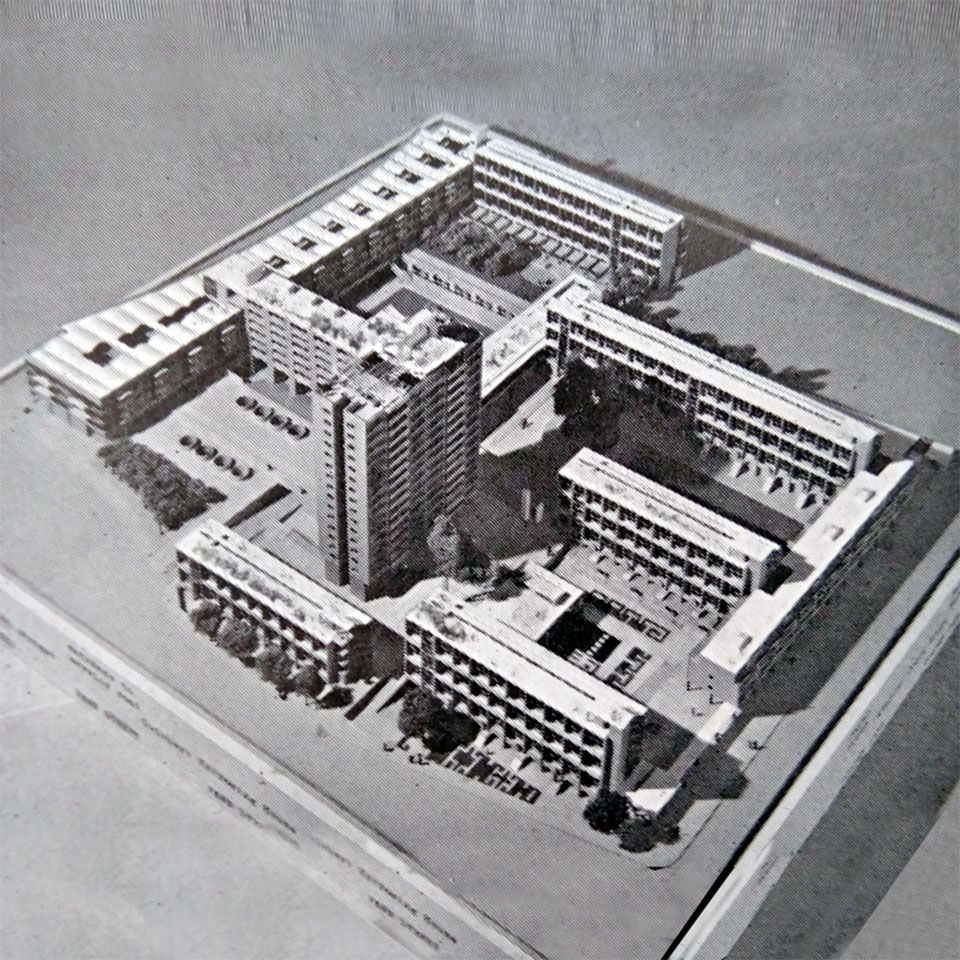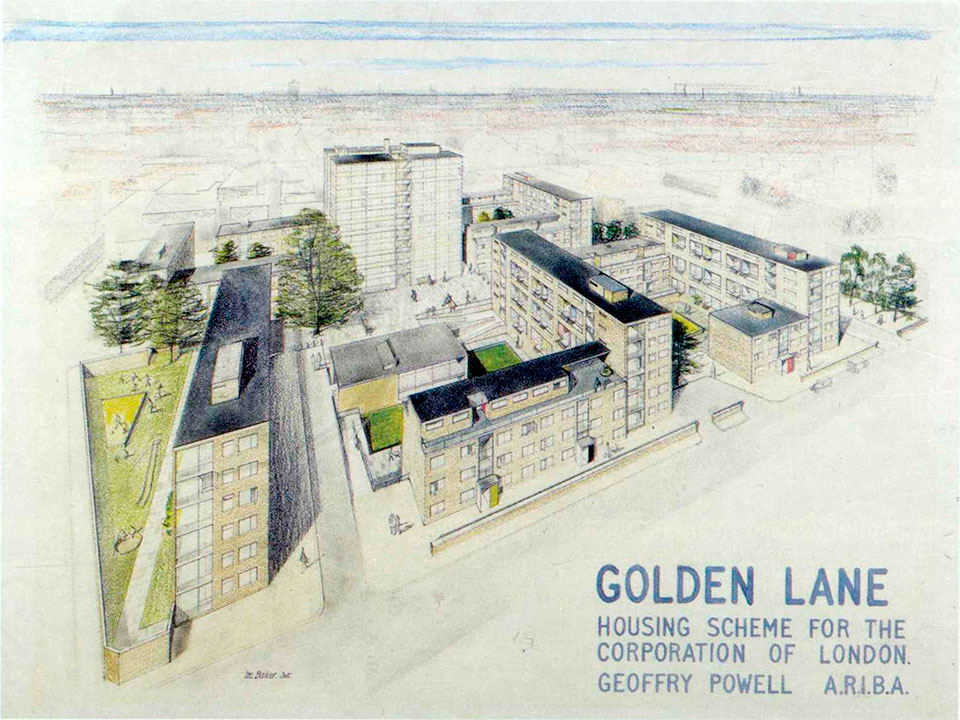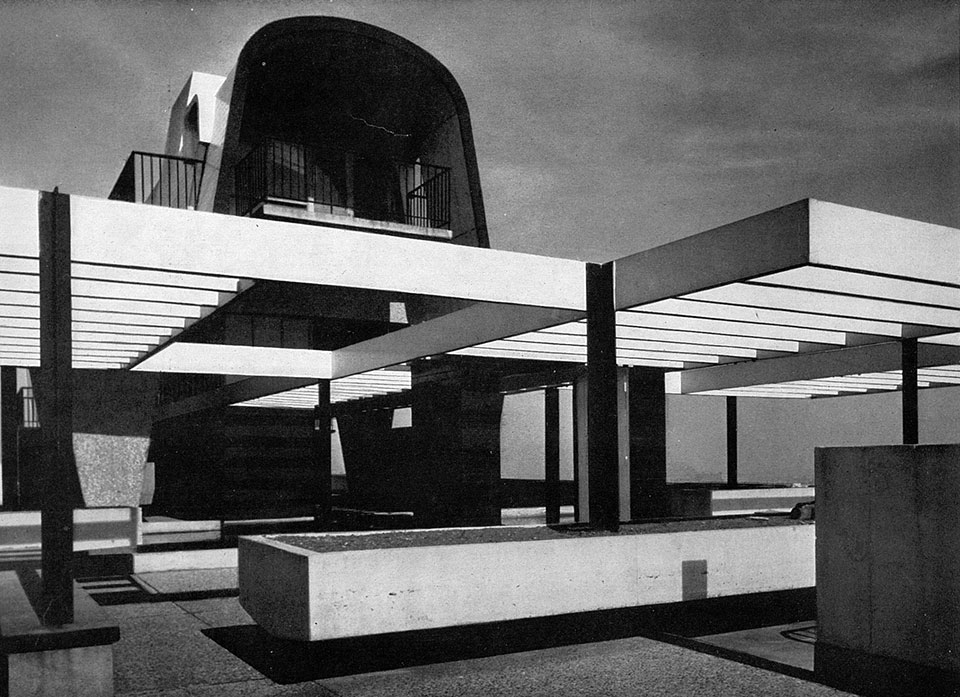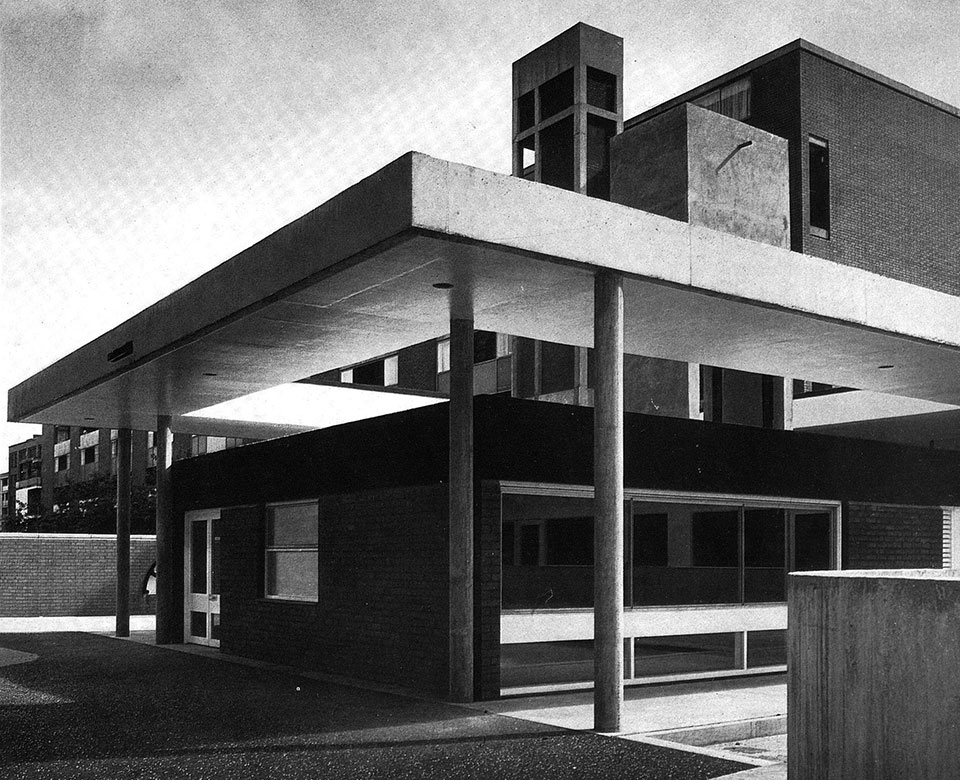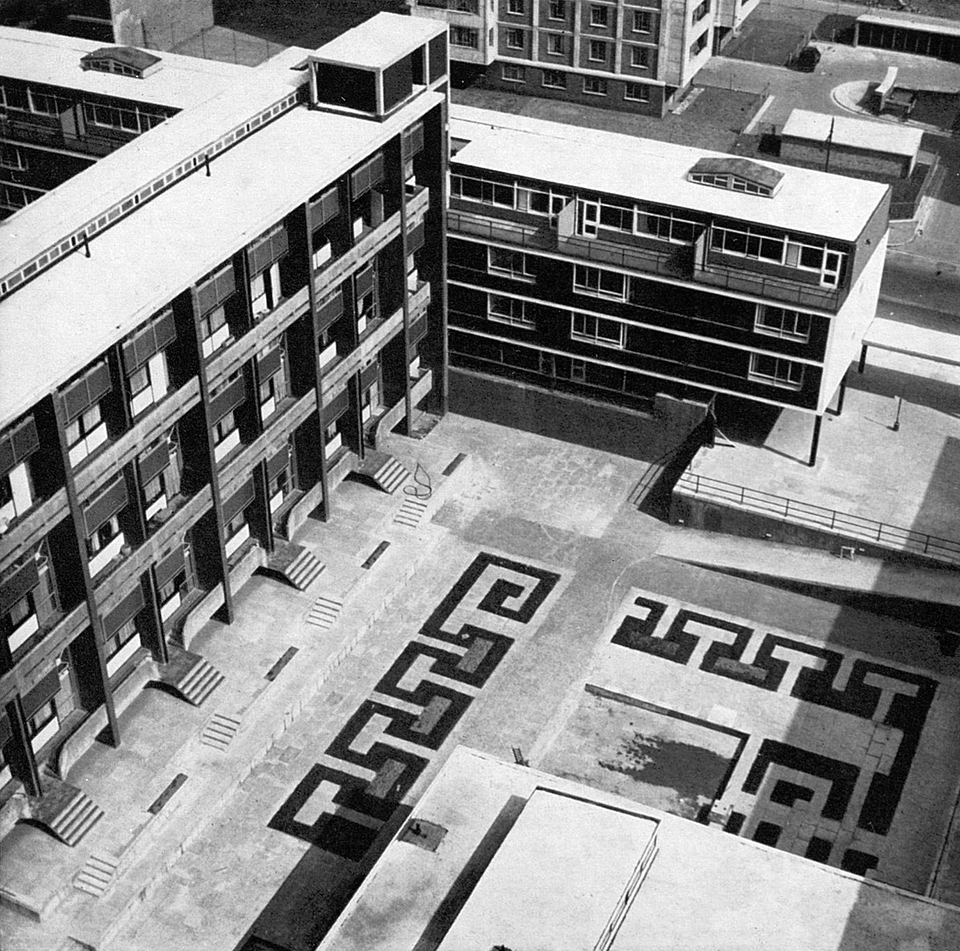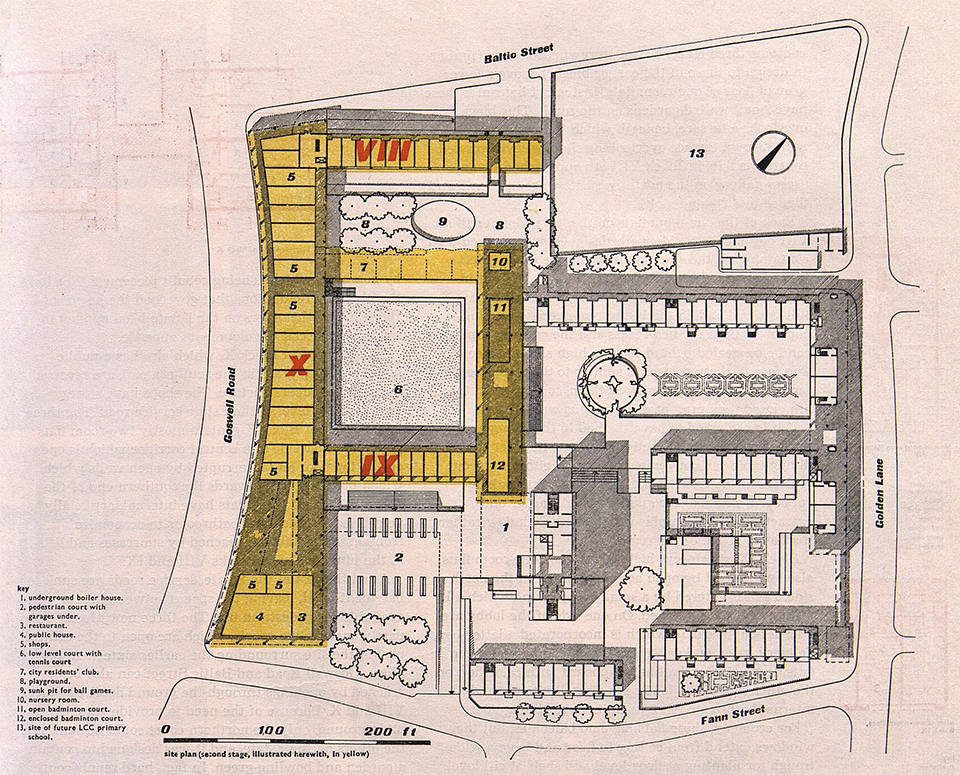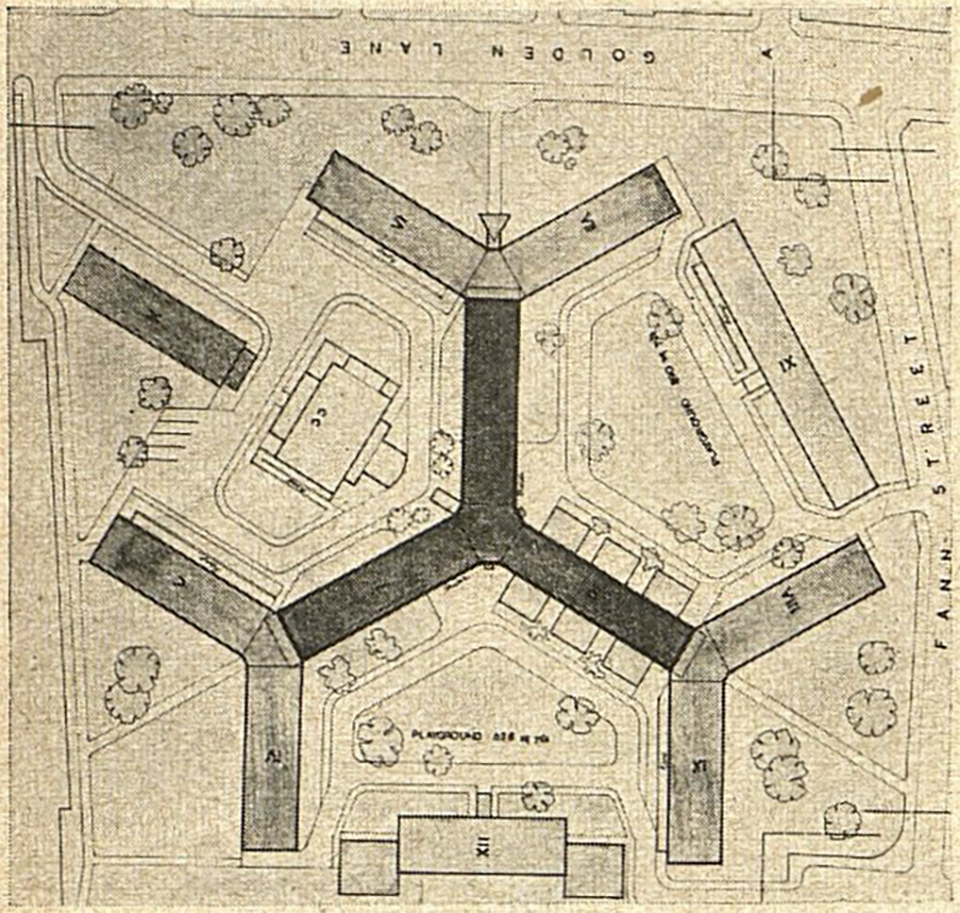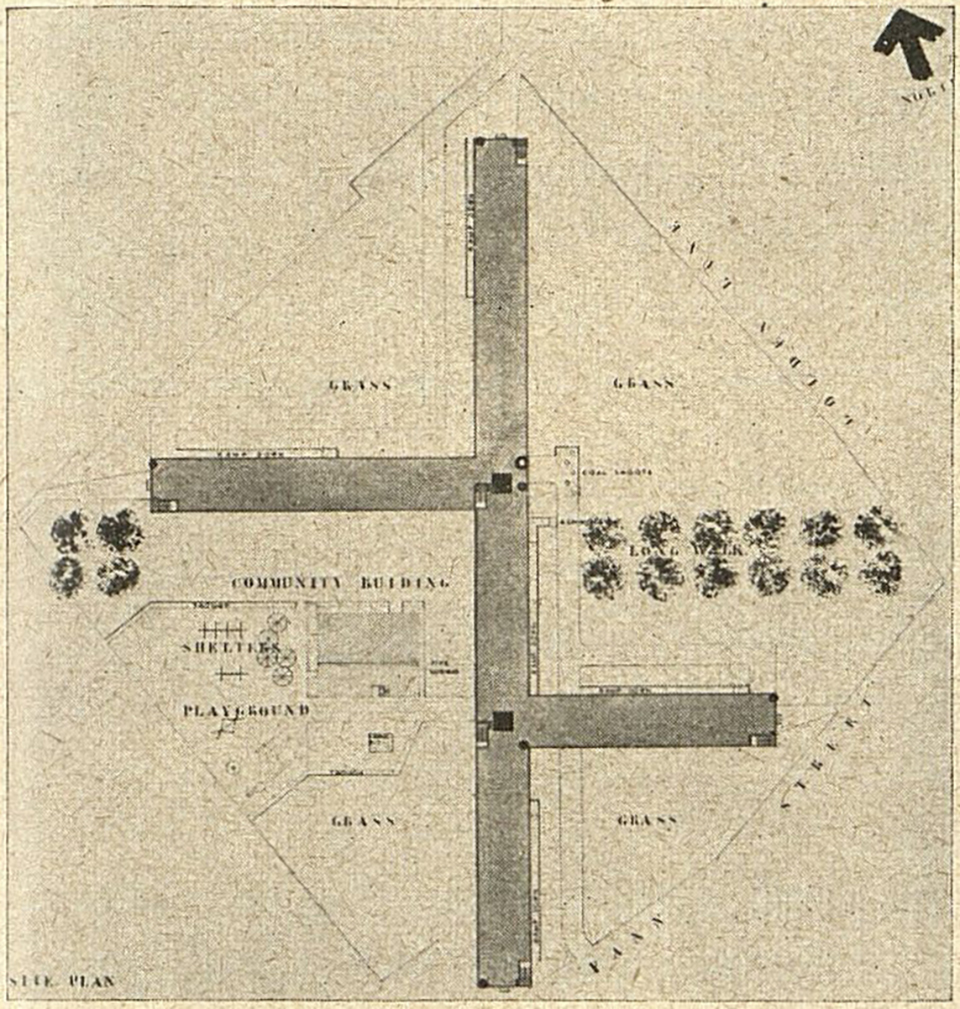Golden Lane Estate
1957
The design for the Golden Lane housing estate was won by Chamberlin, Powell and Bon in competition with 177 other entries [1] including submissions by Alison and Peter Smithson and Skinner, Bailey & Lubetkin. The site was amongst a large area of bomb damaged urban fabric and was assembled by compulsory purchase. The scheme was the Corporation of London's first large scale housing development after 1945 and was subject to considerable scrutiny in the architectural press. The competition called for accommodation of 200 persons per acre which effectively demanded a portion of any entry to include a high-rise solution. Geoffrey Powell, in his winning scheme, proposed an 11 storey bock of two bedroom flats (Great Arthur House) which were considered as 'adventurous' by one observer. The same author viewed 'the human, intimate treatment of the densely populated site [as] excellent' [2]. Powell referred to the attempt to 'provide interest within the site' and the ensuing 'inward looking' character in his report accompanying the competition entry [3]. In truth, with historical distance, his drawings appear prosaic, but the assessors were able to read the generous concession to the public realm and the civic mindedness apparent in Powell's scheme, referring to it as an 'urban village' [4]. The scheme was eventually delivered in two phases, between 1954 and 1962, following two revisions to the formal layout; the second determined by an extension of the site to Goswell Road. Across the site, the ground plane is variously sunken to create semi-private space with water, planting and paviours designed to be read as 'a picture on the ground from the upper storeys of the flats' [5]. The eventual mix of a tower and a series of lower blocks (between 4 and 6 storeys) were built, as originally intended, to look inwards to this series of partially enclosed courts connected to a central plaza with a community centre at its heart. On its long sides, the tower was clad in yellow opaque glass and clear glass with fairfaced concrete balconies. Alongside the rather jolly hat of a roof canopy this colouration made for an optimistically bright addition to the London skyline - it was the first building to break the LCC's 100ft height restriction and for a time was the highest residential building in England [6]. The roof was accessible for residents of the upper storeys and had its own decorative pool, planting and the aforementioned 'hat' (pergola). A good mix of housing types meant that families were well accommodated and provided for in this social mix, lower blocks contained maisonettes as well as flats. The community centre and creche inside the perimeter were joined by shops and services once the scheme was extended to Goswell Road. The whole estate was listed in 1997.
[1] Architects' Journal, 14 February 1952, p.209
[2] Architects' Journal, 6 March 1952, p.293
[3] Architects' Journal, 6 March 1952, p.298
[4] Architects' Journal, 6 March 1952, p.298
[5] Architectural Review, January 1954, p.52
[6] Official List Entry - 1021945
